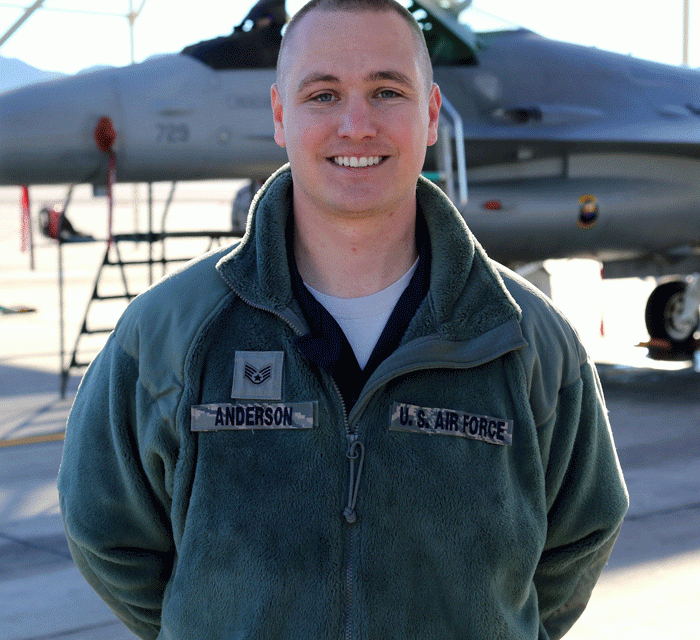2015-01-25 By Ed Timperlake
Former CO VMFA-321
Recently I attended an Air Force association news briefing by Maj. Gen. Garrett Harencak, the AF general who oversees the service’s nuclear weapons delivery systems, and during this briefing he expressed his frustration with asserted facts journalism.
“There are publications out there that are already saying, ‘You don’t need this. It’s too expensive. It’s not going to work.’ We don’t even know what it is yet, per se,” Maj. Gen. Garrett Harencak, assistant chief of staff for strategic deterrence and nuclear integration said at an Air Force Association breakfast in Arlington, Virginia.
“It’s already starting. … They are already out there, the usual suspects that have been against every modernization, every recapitalization out there. Don’t listen to them ladies and gentlemen,” he said.
Unfortunately, James Fallows, one of the most talented writers in America, is using his powerful megaphone, has joined the cue of asserted facts journalists the General was referring to.
He does it very cleverly by channeling Napoleon, an historic military genius, to bolster his argument.
The name Napoleon also is synonymous with a “complex” of overcompensation so regardless of his use of Napoleon’s words his article is fatally flawed.
“The moral is to the physical as three is to one,’ Napoleon said about the elements of military strength. Two signs that would make Napoleon worry.”
The first of his two signs of “genuinely bad news” is the frustration being seen by Dr. Michael Gilmore the bureaucratic head of the Pentagon Testing office about the F-35.
Fallows then quotes a powerful message about aerial combat from this very well educated Nuclear Engineer.
“Gilmore warned that unless ‘immediate action is taken to remedy these deficiencies,’ the aircraft’s ability to ‘be effective in combat is at substantial risk.’

The second alarm bell in the same article is an event in the military combat aviation debate over the future of A-10.
In Fallows’s A-10 section, he brings specific focus on the words of a USAF General Officer about the A-10 and the General’s awkward verbal engagement with fellow combat pilots.
The General used the word “treason” about leaks to the Hill. “Treason” was a big oops over the top verbal moment however it is actually against the law for anyone in the Executive Department to lobby the Hill.
The Anti-Lobbying Act underwent major revisions in 2002 that broadened but also clarified the restrictions on lobbying activities by federal personnel.
In addition, the 2002 amendments removed the criminal penalties and substituted civil penalties, with fines that range from $10,000 to $100,000 dollars for each individual violation of the law which, like the proposed changes in the Hatch Act, make it more likely that federal personnel may be punished for violations of the Anti-Lobbying Act.
To make the very public point even stronger there is a picture of the general included in that section.
Sadly, for a decorated combat pilot he is now in the center of a media bulls eye, and the article can be seen as a very powerful writer/editor triggering for additional critics a “cleared-hot” pile on of written vilification of this individual.
As the first Assistant Secretary for Congressional and Public Affairs at the DVA, I often had to explain what senior officials, were really trying to say when a story gained critical mass.
I learned that often words poorly spoken but absent true malice, can make for a horrible time for a human being when the media rips into you. It is especially hurtful for an honorable individual who has dedicated his life to protecting and serving America.
Rather blunt criticism of the statement quoted in the Fallows article:
“This is morally reprehensible conduct by someone in a position of such trust and responsibility that it is implausible to think he wouldn’t know better”
Actually the response from the USAF Air Combat Command about the Generals comments being hyperbole is about right.
Many many times in a Fighter Ready Room “debate” we called each other much worse –“what are you a frigging Communist?” (Editorial note-I just substituted “frigging” for a stronger word), and if overheard or leaked to a reporter this headline could be written-“Fighter Pilot claims his squadron is filled with Commies.”
So to summarize the journalistic approach in The Atlantic article; James Fallows attacked the F-35 using observations about combat effectiveness made by Dr. Gilmore, a non-flying civilian, who is not even an aeronautical engineer, while putting in play an AF General Officer as a vilification target.
Strong words are in play —“Treason”, “Fascism,” “morally reprehensible conduct.”
Enough, and perhaps from a genuine human decency perspective all critics should heed the great line from the movie Stripes-“lighten up Francis.”

The fatal flaw in The Atlantic is simple, res ipsa loquitur-the thing speaks for itself.
James Fallows is using a non-aviator to critique the F-35’s combat capability while in the same article he introduced the words of AF General Officer about the A-10.
To further embrace military wisdom as top cover he concludes by yet again channeling Napoleon’s legacy.
“From Napoleon onward, and actually long before, commanders and historians of battle have emphasized that moral traits — commitment, cohesion, belief in the rightness of a cause—matter more in combat than simple material strength.”
Well two can play the game of channeling a highly respected world-class historic person only this time in journalism.
I am as much a journalist as James Fallows is a military officer so let’s all read the brilliant words of the esteemed Walter Lippman to point out the state of modern journalism:
When distant and unfamiliar and complex things are communicated to great masses of people, the truth suffers a considerable and often a radical distortion.
The complex is made over into the simple, the hypothetical into the dogmatic, and the relative into an absolute.
The genuinely bad news about journalism is simple: instead of Walter Lippmans we are getting a surge of asserted facts journalism.
The Atlantic article fails at the most basic level because the reporter doesn’t reach out to the Combat Pilots who will eventually fight and win or die in bringing the F-35 into a worldwide fleet.
They are the ones who can put the aircraft in operational testing and combat context not a team headed by a Nuclear Engineer no matter how smart.
So why is one General Officer’s picture presented yet no serving F-35 pilot mentioned?
From Eglin AFB, to MCAS Yuma, Nellis AFB and NAS Fallon the results are already in– the F-35 is nothing like any aircraft ever flown before.
It is not the physical flying characteristics that are marveled at, it is the cockpit sensor stealth electronic revolution.
https://www.sldinfo.com/wp-content/uploads/2014/11/21st-Century-Approach-to-Tron-Warfare.pdf
The key take away from The Atlantic article is what is not reported which are the views and experiences of all F-35 qualified combat pilots in USAF, Navy, Marines and allied nations who are currently training, and evolving combat tactics for the F-35 to be successfully integrated into today’s fighting forces.
As one of the RAF officers responsible for the introduction of the F-35 into the UK forces, Group Captain Paul Godfrey highlighted in an interview in November 2014:
“There are 115 F-35s flying now.
We are focused on how we are going to use the capability, not whether it will exist.
There is a huge gap between the users of the aircraft and the broader puzzlement over the future outside of the warrior community; we are just getting on with it.”
While more direct than most, the Group Captain’s comments reflects the reality as seen by those in the U.S. services and in U.S. allied partners involved in bringing the F-35 fleet to life.
It starts with the USMC, F-35B and will accelerate through the next three years.
The USAF recently had its first F-35A arrive at Nellis AFB configured for the rollout of their first squadron next year.
We have had the opportunity to visit three key centers for the operational launch for the F-35, MAWTS-1 MCAS Yuma, and VMX-22 for the USMC, Naval Strike Air Warfare Center, NAS Fallon for the USN and Nellis’s Air Warfare Center for the USAF.
In all three centers F-35 teams are looking both inward and also reaching out to work jointly with each service partner to help integrate the aircraft within airpower legacy technology and operations.
The coming iterative dynamic sharing, of new training, tactics and technological innovations is especially noteworthy because throughout that never ending process allies will also add their perspectives to the learning cycle.
MAWTS, for USMC F-35B:
https://www.sldinfo.com/mawts-1-and-shaping-the-future-of-usmc-aviation-within-the-marine-corps/
USAF Weapons School for F-35A:
https://www.sldinfo.com/arrival-of-f-35a-at-nellis-afb/
USN Fallon (Last to get F-35, the F-35C):
https://sldinfo.com/flipbooks/Distributed%20Laydown/TheFutureofNavalAviationNovember2014/
And there clearly are journalists who actually do field research:
https://www.sldinfo.com/an-update-on-the-f-35-final-assembly-line/
Asserted facts journalists have clearly distorted the public debate; some would even say have dominated it.
This is important in an of itself, but it also creates an instinct which looks for the “gotcha” rather than addressing how democratic societies can effectively defend themselves going forward in a challenging decade ahead.
One such issue will be the pubic treatment of the inevitable first crash of an F-35 sometime in the future
Since The Atlantic put the OSD testing office front and center on the F-35 as the only experts it is now time to finally bring up very sensitive additional dimension to the F-35 debate.
Realistically and sadly an F-35 will eventually crash and it is time to put that future event on the table.
When a crash occurs everyone will pray the pilots survives. Military airplanes fly and some eventually crash.
This is when the F-35 debate may really get ugly since there are apparently no boundaries in the OSD testing office and how they are often reported on as the only experts.
From the article Dr. Gilmore has already exceeded his personal knowledge and experience by definitively stating his view on combat effectiveness, “the aircraft’s ability to ‘be effective in combat is at substantial risk.”
Has anyone on Dr. Gilmore’s staff even flown and qualified as a trained combat aviator on the F-35 in AA, AG and Electronic warfare?
If so then it would be much more helpful and credible to put their insights on the record in order to advance a real operational test debate.
The public record shows that many media articles are solely based on reports by the OSD non-flying “testing” office.
This is not a criticism of their educational and or military background because I am sure when presented with their resumes the Gilmore team can be seen as smart inside their assigned mission including having combat and test pilots perhaps on staff.
But the real world dynamic of operational testing is now in the hands of active flying squadron Commanders and pilots and that is what is missed in a lot of reporting.
And for this you have to go to places like Edwards AFB, Nellis AFB and Yuma Marine Corps Air Station.
Being slightly superstitious I want to tread softly on a discussion about aviation safety.
Because to date the great underreported experience with the F-35 has been its’ safety record.
The F-35 initial safety record is world class noteworthy.
This is way out of the ordinary, historically, one just has to look at a very early B-17 testing crash or the very dramatic crash of the first prototype of the great F-14 Tomcat to see how much effort has gone into F-35 safety of flight by all concerned.
With 2,000 hours of F-4 flying time and another 1000+ in other jets mostly A-4 T/M/S and even a few hours in an S-2, and TA-7, and a couple of hundred hours flying the UH-I found the F-35 simulator is a piece of cake to fly stick and rudder wise, but easy to fly or not a chain of events can force an ejection.
I ejected from a fully operational two engine Navy Jet below 1000 feet when it caught fire on takeoff and exploded on a night mission.
I was a student pilot in the T-2B “Buckeye” a plane with thousands of hours of success flying missions, yet a navy mechanic over torqued a fuel line connection that separated under pressure and caused both engines to eventually catch fire. Ejecting out of a fireball was a hoot.
But surviving with my chute being snagged by a tree and winding up in a forest fire on the ground was not so enjoyable.
Consequently, I know a lot about aviation mishaps both personally and also as a graduate of the USN Aviation Safety Command Course, then taught at the Navy Post Graduate School, Monterey Ca. I am certified to sign off on accidents and have done so.
I must stress enough caution if an F-35 crashes because, make no mistake, the fundamental rule is never rush to judgment until the accident board can establish the facts leading up to a crash.
In the event of a crash, for any reason, I am positive OSD test office will have a lot of documentation rightly or wrongly (you don’t know until you know) identifying the causes contributing to a crash. So it is possible that when the inevitable crash occurs those documents might be immediately and widely made known to reporters.
In the past days of DOD/Service fights over aircraft development this was called building a “Pearl Harbor File”—to say see “we told you so.”
Those files exist and since the only way to have a 100% safety record is not to fly– but fly we must.
It must be said and put on the record before a crash happens that the senior officers bringing the F-35 into their combat forces are doing it with vision and courage knowing that whatever happens they will perhaps, even savagely, be second guessed in print.
So please to all writers and F-35 critics symbolically standing on “Vultures Row”, a catwalk on a Carrier where one can watch arrested landings and perhaps see a specular crash, who immediately will write something when an F-35 crashes and have access to study after study from OSD testers saying “we told you so” please put the event in the context of “The Right Stuff.”
Tom Wolfe put it so well in one of the greatest aviation books ever written about military pilots. In a chapter on Chuck Yeager and others who were doing flight test at Edwards
Wolfe describe pilots looking up when someone entered their bar- Pancho Barnes’s “Fly Inn” —when someone new walked in and had nothing to do with flying at Muroc “he would be eyed like some lame goddamn mouseshit sheepherder from Shane.”
Or to take a much higher road all should just remember the immortal words of President Reagan:
‘The future doesn’t belong to the fainthearted; it belongs to the brave.’
Editor’s Note: Ironically, while Fallows was publishing his article on the F-35, the USAF was rolling out its first F-35A configured for the initial operational capability and working on re-shaping or renorming airpower for the decade ahead.
Second Line of Defense attended the ceremony for the arrival of the first F-35A to the USAF Weapons School on January 15, 2015.
There are already 4 F-35As here with the test wing, but this is the first full up IOC template F-35A, which will be put through its paces as part of the preparation for next year’s entry into service of the airplane into the USAF operational fleet.
In other words, this is the next phase of the introduction of the F-35A into service.
The testing and training will continue but with an aircraft configured for the initial operational role of the aircraft within the USAF operational fleet.
And IOC for the F-35 has to be placed in the overall context of how the US services and allies are looking at the introduction of the F-35 into service.
The IOC of the F-35 is not simply about the introduction of a replacement aircraft but the next phase in the revolution of airpower and inextricably intertwined with doing air combat differently.
The photos in the slideshow above highlight various aspects of the day at Nellis, and are credited to Second Line of Defense except the first one which is credited to Nellis AFB.
- The first photo shows Capt. Brent Golden, 16th Weapons Squadron instructor, taxis an F-35A Lightning II at Nellis Air Force Base, Nev., Jan. 15, 2015. The F-35 Golden flew is the U.S. Air Force Weapons School’s first assigned F-35. (U.S. Air Force photo by Staff Sgt. Siuta B. Ika).
- Photos 2-7 show the arrival of the F-35 and its taxing to arrive at its hanger.
- Photos 8-10 show the F-16s welcoming the F-35 to Nellis.
- Photo 11 shows the pilot exiting the F-35.
- Photos 12 and 13 show Major General Silveria prior to and after the arrival of the F-35.
- Photo 14 shows the Commander of the 57th Wing, Brigadier General Chris Short.
- The 15th photo shows the pilot, Captain Brent Golden.
- The final photo shows Staff Sargent Jason Anderson who is a dedicated crew chief on the F-35 with the 57th Wing.
For a PDF version of this article please download here:
A Challenge for Informed Public Debate
Thanks to The Aviationist website for bringing the F-35 Pro Bowl flyover:
http://theaviationist.com/2015/01/26/f-35-flyover-pro-bowl/
The flyover illustrates yet another opportunity to find some operators to interview.
In other words, here are four more USAF combat pilots “hiding in plain sight” any one of which could have easly been asked to give an interview about preparing for eventual global airpower combat —anywhere anytime – for a much more Atlantic “fair play” article.
“Cougar”, “Jeb”, “Merc”, and “CATA” are the nicknames of the Joint Strike Fighter pilots of the 61 FS who performed the flyover.


